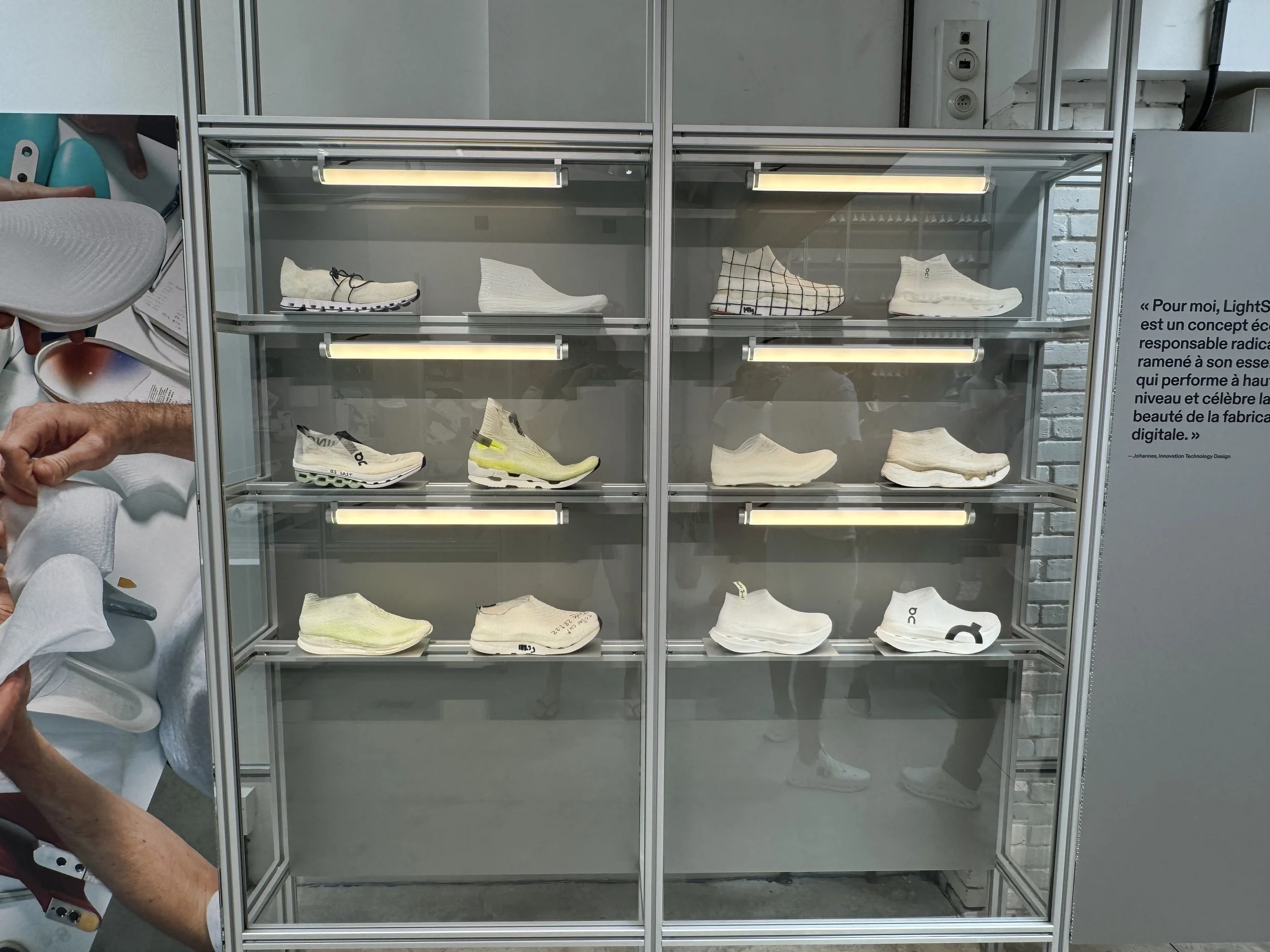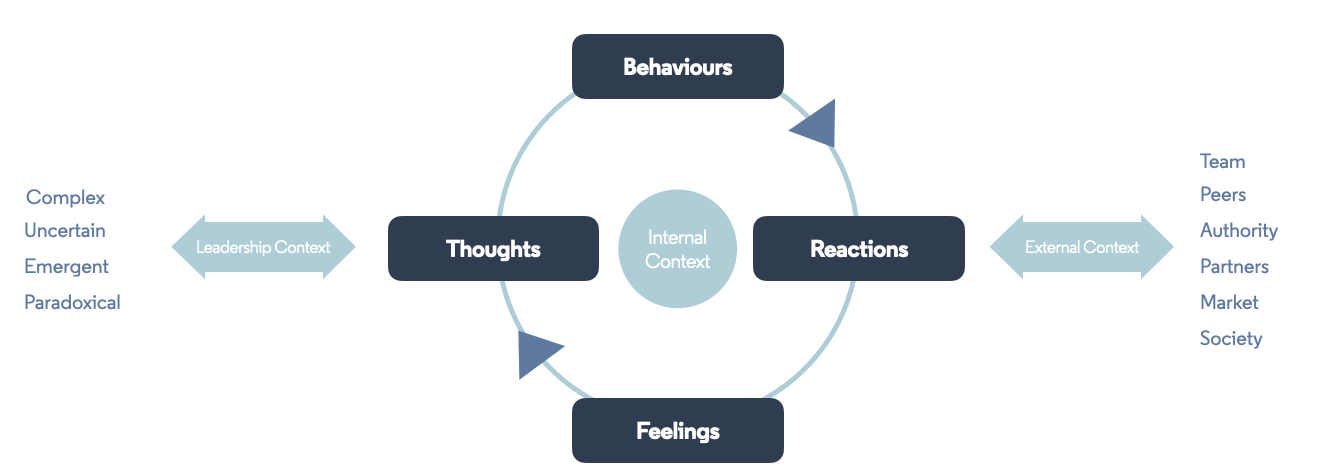◎⁃◎
Hello,
Welcome to Connecting Dots, a monthly newsletter that explores the inter-relations between innovation leaders and organizations. If new you can subscribe here.
This is the first newsletter unpacking a single experience scale of the Innovation Leadership Map to better understand the “inner-world” of innovation leaders. Today, I am trying a new format to explain the concept and how to incorporate it into your work. Feedback on the structure welcome.
I’d also love to hear any reflections or personal stories of how you felt identity helped or hindered your work. After the article, I’ve added a short update on what I’ve been up to this month.
Okay, grab a coffee, settle in and on with innovation leader as identity...
The Innovation Leader Identity
“You’ll be hated.”
This strong statement came from an impressive professional when I asked if being known as an innovation leader is helpful. She was currently leading the digital transformation of an industry-leading firm after having built from scratch the most progressive cybersecurity department of any top-tier European bank.
While she was a practical and humble leader, she found that as others labelled her an innovator due to accomplishments brutal reactions to the identity emerged. It was confusing as she was doing what the firm wanted but was perceived as subverting others. She learned that to succeed at leading innovation she needed to actively disassociate herself from the identity of being an innovation leader to engender collaboration and cooperation from peers. This story reminds us that behind the objectification and lionization of innovation leaders in media the lived reality is very different.
A Leader’s Identity
All leaders have an identity. Comprised of how they see themselves, how others see them as a person and how others see the role they inhabit regardless of the person. The identity of an innovation leader is especially fraught. Like all leaders, they are trying to drive change rather than stabilize the status quo. However, the type of change they are driving is more uncertain, unpredictable and chaotic than routine change. It’s the terrifying experience of breaking new ground without the new state yet clear as you’re busy making it real.
As seen in the opening vignette, innovation leaders trigger strong emotions from others. High or low-energy emotional responses are not related to what the innovation itself is, it’s to what people think it means. In general people love change, it makes life interesting. What they hate is loss. Sometimes what people think change means is linked to some kind of perceived intangible loss. It could be something like status, sense of relative competence or self-perception of being innovative themselves. Additionally, it could be a loss of their idea for what the company was or their vision of what it will become.
The experience of how others respond to the identity of an innovation leader is represented by three positions.
Idealized
These responses to the innovation leader's identity can be cloaked in something that seems good. When someone is anointed an innovation leader, whether formally or informally titled, great expectations are placed on them. In the idealized state, there is a delusion that this person will bring magical solutions or can reduce the pain of doing something new for the first time. Many leaders fall into this trap of delusional idealization fueled by the hope expressed around them. Only to find hope becomes disappointment over time.
Despised
The real work of innovation leadership is gaining the engagement and support of others outside your boundary of authority. In positions where those with the identity of being an innovator are actively seen as a threat, they find themselves in a very depressive low energy state of being despised. It may not be overtly hostile, though one leader found a pattern of being told to “get the f*** out” of meetings, but the real violence is a lack of collaboration. Often, this has little to do with who is in the role, it is merely the person carrying the innovator identity.
Tolerated
The optimal identity for an innovation leader is to be tolerated. This acknowledges the tension that while they may still pose a threat, others are willing to collaborate and form a working alliance. In this position, the leaders are sensitive to the responses of others and empathetic to the human needs in parallel to the technical needs of the project or program. It may seem a low bar to aspire merely to be tolerated but this is the identity position leaders report drives progress. Sliding to the idealized or despised positions was strongly associated with unrealized potential and often traumatic outcomes.
The Identity Experience Scale maps out these positions. Most leaders learned the tolerated position through trial and error. They also frequently link achieving this productive state through practicing humility. Humility is harder to unpack than the unproductive positions full of practices like arrogance, condescension, stubbornness, heartlessness, etc.
I understand humility as practicing vulnerability. Practicing vulnerability means to be capable of being wounded; liable to injury or criticism; subject to being affected injuriously or attacked. In other words be willing to learn you might be wrong but still try. After all, an innovation leader believes something might or should be possible yet only when they do it will it be known for certain. There is an acceptance and ownership of risk that the leader tames.
As the old saying goes “only a fool marches in blindly without hesitation.” Risk doesn’t require recklessness. Successful innovation leaders are very thoughtful about how they will work with others. Both their needs as a person and the needs of the business. Too often leaders only develop the technical capabilities and not their interpersonal capabilities.
Tooling
To be effective, and resilient, as an innovation leader, it is helpful to assess the building blocks of your identity. A way to do so is to draw four circles on a page. In each circle answer one of the following questions in this order:
How do I see myself as a leader?
How do others see me as a person?
How do others see my role regardless of the person?
How do I wish to be seen as a leader?
Typically, you will find some distance or dissonance between each perspective. This will be evident in your wish. The intent of this question is to practically identify how you might engender the identity of being tolerated. This question will link to the type of innovation and culture you are working with.
Based upon this wish your final task is to note what practices or behaviours will help you develop this position or avoid the despised and idealized states. Revisit this exercise as you go through key stages of an innovation development journey. Identity changes as there are shifts in aspects such as team size, budget, geography or exposure. Identity is not static. It is dynamic based on what you do, how you behave and what others wish for from you. Self-awareness is your greatest asset to maintain a productive identity amongst peers.
Next month I’ll explore the Outlook scale and the positions of being cynical, hopeful or euphoric.
Brett’s Movements
Since we last met I’ve run another fantastic three-day innovation capability development workshop for a global consultancy in partnership with the D&AD. Also with the D&AD, I contributed a module on empathy to a course they created with Future Learn. How to Enhance Your Creative Empathy is a great course and an interesting example of online learning increasing access and providing practical training backed by deep rigour (I’ve done all the reading so others don’t have to 😃).
On the personal R&D front, I’ve started testing the methodology of the individual Innovation Leadership Mirror development model. As well, amazingly, I’ve started to contribute to a G20 communiqué for the Rome 2021 summit on digital solidarity principles. Policy is out of my comfort zone, but hopefully, we can help reinsert human-centric outcomes to global digitization discussions.
Stay curious and courageous,
~ Brett
P.S. Please share this newsletter with a colleague who you think would appreciate the topic of innovation leadership.















